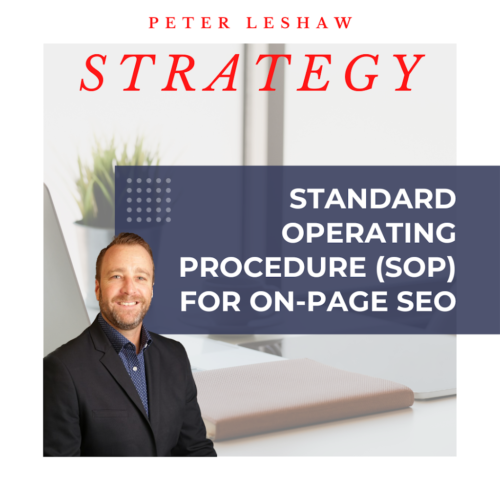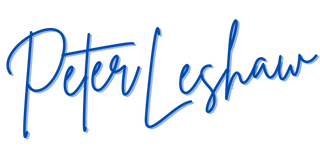If you’re new to the world of SEO or responsible for managing your own website’s optimization efforts, you might be feeling overwhelmed. Fortunately, there are resources available to help guide you through the process. One such resource is this SOP for On-Page SEO that I created for business owners who are tasked with managing their own online marketing.
While this is not an official SOP, it serves as an excellent starting point for anyone looking to optimize their website content for search engines and improve the user experience. The SOP provides a comprehensive guide to keyword research, title tags, meta descriptions, headings, internal linking, images, content, page speed, mobile responsiveness, and analytics monitoring.
By following the SOP for On-Page SEO, you can ensure that your website is optimized for search engines and provides a positive user experience. While there are many factors that contribute to a successful SEO strategy, starting with a solid foundation of on-page optimization is key.
Find out how you can unlock your digital marketing potential with Peter Leshaw’s Strategy or Training.
Purpose:
This SOP outlines the process for optimizing website content to improve its visibility in search engines and drive more relevant traffic to the website.
Scope:
Procedure:
1. Conduct Keyword Research
-
-
- Identify the primary and secondary target keywords for the web page.
- Use keyword research tools such as Google Keyword Planner, Ahrefs, SEMrush, or Moz Keyword Explorer to find new keyword ideas.
- Analyze competitor websites to identify new keyword opportunities.
-
2. Optimize Title Tags
-
-
- Include the primary keyword in the title tag.
- Limit the title tag to 60 characters or less.
- Make the title tag compelling and click-worthy by using persuasive language and addressing the user’s search intent.
- Use a unique title tag for each page.
-
3. Write Meta Descriptions
-
-
- Include the primary keyword in the meta description.
- Limit the meta description to 155 characters or less.
- Use persuasive language and address the user’s search intent.
- Write unique meta descriptions for each page.
-
4. Optimize Headings
-
-
- Use descriptive and informative headings that accurately reflect the content of the page.
- Use H1 tags for the main heading of the page.
- Use H2 tags for subheadings and H3-H6 tags for further subheadings.
- Include the primary keyword in the H1 tag.
-
5. Use Internal Linking
-
-
- Link to related content within the website.
- Use descriptive and relevant anchor text for the link.
- Link to high-quality pages that are relevant to the content on the page.
- Use follow links for internal linking.
-
6. Optimize Images
-
-
- Use relevant and descriptive file names for images.
- Use alt tags to describe the content of the image.
- Compress images to reduce the file size without sacrificing quality.
- Use a CDN (Content Delivery Network) to improve the loading speed of the images.
-
7. Create High-Quality Content
-
-
- Use the primary keyword in the first paragraph of the content.
- Use subheadings to organize the content and make it easier to read.
- Write in a clear and concise language that is easy to understand.
- Use relevant images and videos to support the content.
-
8. Improve Page Speed
-
-
- Optimize images and videos to reduce their file size.
- Use a content delivery network (CDN) to reduce page load times.
- Minimize the number of HTTP requests by reducing the number of scripts and stylesheets.
- Use browser caching to store frequently accessed content locally on the user’s computer.
-
9. Ensure Mobile Responsiveness
-
-
- Use a responsive design that adapts to different screen sizes.
- Test the website on different devices and screen sizes.
- Use legible font sizes and minimize the need for zooming.
- Make sure that all clickable elements are large enough for users to tap with their fingers.
-
10. Monitor Analytics
-
-
- Use a web analytics tool such as Google Analytics to track website traffic and user behavior.
- Monitor the bounce rate, average session duration, and pages per session to assess user engagement.
- Monitor keyword rankings and search engine visibility to track the effectiveness of the on-page SEO efforts.
- Use analytics data to inform ongoing optimization efforts.
-
Documentation:
Any changes to the on-page SEO optimization should be recorded and documented.
Training:
Any changes to this SOP should be communicated to the relevant employees.
Conclusion:
By following this SOP for on-page SEO, you can ensure that your website is optimized for search engines and provides a positive user experience. Regularly monitoring analytics data and adjusting the optimization efforts accordingly can help improve website visibility, increase traffic, and achieve business objectives.
Related Posts:
Why SOPs are Critical for Small Business Owners to Succeed in Digital Marketing (Strategy)
As a business owner, you understand the importance of having a well-organized and efficient team to achieve your business goa…
Read More


